"The Scoop on Co-Working Spaces : Passing Phase or Permanent Fixture?"
As workplaces rapidly change, with more flexible options and remote work becoming the norm, traditional offices are evolving.
One major change is the rise of co-working spaces, where people share offices and resources. In this article, we'll look at how this trend started and whether it's likely to stick around.
The Emergence of Co-Working
When contemplating co-working spaces, illustrious names such as Regus, WeWork, and Spaces often come to mind, symbolizing expansive networks of shared workspaces across the globe. However, the roots of co-working are grounded in a more modest setting than the sprawling skyscrapers that dominate contemporary skylines.
In fact, the first working concept of a shared office was created back in 1995 when a group of 17 German computer programmers wanted a safe space to practice their hacking skills. Naming it “C-Base”, this Berlin-based facility provided hackers with a community and facilities to pursue their computer-oriented endeavours.
While C-Base imbued many of the characteristics of the modern shared office model, the actual term “co-working” didn’t catch on until 2005. That began with serial entrepreneur, Brad Neuburg, and a space he originally referred to as a “9 to 5 group” in San Francisco. This was followed by the San Francisco Coworking Space, and later, the Hat Factory.
Driven by the desire to combat the isolation of remote work and the financial burden of traditional office leases, the concept of co-working quickly gained popularity around the world. That growth doesn’t seem to be slowing down either. In surveys collated by Statistica in 2018, it was found that the number of co-working spaces grew more than 1000% in the decade prior and that number is expected to hit 42,000 locations by the year 2024.
Looking further ahead, its estimated that by 2030, co-working spaces could make up 30% of corporate office space.
Benefits of Co-Working Spaces
Co-working spaces are embraced by businesses for a multitude of reasons, all centred around common objectives: attracting and retaining talent, saving costs, fostering innovation, nurturing community, enhancing productivity, and maximizing space efficiency.
Flexible Office Solutions: Co-working provides adaptable office setups, whether integrating remote workers into a shared space, establishing a co-working zone within existing premises, or leasing space to external collaborators. Flexibility is key!
Efficient Space Utilization: Businesses can trim real estate expenses and swiftly expand into new territories without the typical complexities of setting up a dedicated office, thanks to co-working arrangements.
Talent Magnet: In a fiercely competitive job market, co-working environments can be instrumental in recruiting and retaining top-tier talent. Such spaces foster creativity and innovation, setting your company apart as an attractive employer.
Fostering Creativity: Co-working hubs serve as incubators for creativity, ideal for teams focused on innovation, research, and development.
Community Building: Co-working fosters a strong sense of community among its occupants, fostering a supportive environment where individuals feel connected and valued, enhancing overall job satisfaction and motivation.
Enhanced Productivity: The vibrant atmosphere of co-working spaces often boosts productivity, with peer accountability and lively energy motivating individuals to stay focused and on task.
The Perceived Drawbacks of Co-working Spaces
Despite the many benefits of co-working spaces, several negative perceptions may deter companies from seriously considering this type of arrangement. Below are some of the most common concerns.
- Culture Clash: Co-working spaces typically host people from different companies. This makes it challenging to establish a consistent office culture that aligns with your organization’s values.
- Weakening Bonds: Employees working off-site in co-working spaces might form stronger connections with others from different companies rather than bonding within their own organization. This can lead to a sense of disconnection and concerns about career growth
- Noise and Distractions: Co-working environments are often open and bustling, which can be a distraction for some. The mix of businesses and personalities can lead to an unpredictable and noisy atmosphere
- Security Concerns: Co-working spaces can be riskier when it comes to protecting sensitive information and intellectual property. You need to be extra vigilant about safeguarding your company’s assets.
- Competition for Talent: Other companies in the same co-working space could try to recruit your employees, leading to potential talent poaching, which is a concern in a competitive job market.
The Unique Needs of Co-working Spaces
As resellers and office project managers, there’s a good chance you’ve already helped to fit our or refurbish a co-working space already. If so, you’ll know that the needs of a co-working space can differ slightly from a traditional office.
Flexible Desking
Co-working spaces can require a range of desking solutions, especially if they are a business that offers tiered pricing for their customers. In these models, workers can have the choice of renting the level of workstation that fits their budget. This could mean anything from a fixed-height hot desk, a height-adjustable desk with monitors or a fully mobile workstation with wireless power.
Acoustic and Privacy Screens
Working in a public or cooperative space can be both noisy and intrusive. There are just some documents or images you don’t want your next-door neighbour to see, even if he’s a complete stranger with no idea of what he’s looking at.Co-working spaces request more desk-mounted screens and acoustic solutions than traditional offices do, purely because workers require more privacy in these settings.
Phone Booths and Flexible Meeting Spaces
For workers connecting remotely to a larger team, there’s a requirement for simple, flexible meeting spaces that are sound-treated for additional privacy. Workers can pop in and out of these insulated phonebooths for meetings, phone calls or just a place to collect their thoughts before a big presentation.
Larger phone booths like the SpacePod Meeting Room can accommodate up to 4 people for impromptu offsite meetings or presentations. Carefully applied acoustic treatment means you’re protected from the hum of the office floor while your meeting stays private.
OFC Supports You !
As one of Australia’s leading office furniture retailers, we do everything in our power to support our customers.
Stuck for ideas? Or maybe you just want an office furniture retailer that you can rely on. Give us a call on 1300 997 747 or send us an email so we can discuss some options.


















